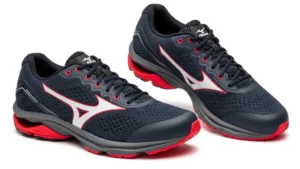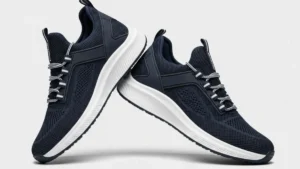
Why the Right Men’s Walking Stick Matters
The right men’s walking stick improves stability, reduces joint strain, and supports better posture whether you’re hiking or walking daily. It offers safer movement, greater comfort, and helps prevent falls, making it an essential tool for both outdoor adventures and everyday mobility needs.
Key Features to Look For in Men’s Walking Sticks
The best men’s walking sticks have strong materials, a comfortable handle, adjustable height, and a stable tip. These features work together to give you better support, safer movement, and lasting durability whether you’re hiking rough trails or walking on smooth city paths.
Material Strength (wood, aluminum, carbon fiber)
Wood gives a classic look and natural strength, ideal for style and daily walking. Aluminum is light yet sturdy, making it easy to carry. Carbon fiber offers high strength at an even lighter weight, perfect for long hikes. Choose based on your balance needs and carrying preference.
Handle Grip Types (ergonomic, knob, crook)
Ergonomic grips fit your hand’s shape, reducing strain on wrists. Knob handles add style and are easy to hold for short periods. Crook handles give you a quick hook to hang on a chair or arm. Pick the grip that feels most natural for your walking style.
You Might Also Like: THERUNNINGPOST
Height Adjustability
An adjustable stick ensures a correct fit for your height, keeping posture natural and avoiding strain. It’s useful if multiple people use the same stick or if you walk on both flat and hilly terrain. Quick-lock systems make changes fast and secure.
Tip Design for Stability (rubber, spiked, interchangeable)
Rubber tips grip smooth floors and pavement. Spiked tips dig into dirt or snow for better traction. Interchangeable tips let you switch depending on where you walk. The right tip can make the difference between slipping and staying steady.
Best Men’s Walking Sticks for Hiking
The best men’s walking sticks for hiking are lightweight, absorb shock, and hold up to rough terrain. They give you steady footing, reduce joint strain, and make long treks more comfortable. Choosing the right one can mean the difference between a tiring hike and an enjoyable, safe adventure.
Key Features for Hiking
A lightweight build is crucial. Carbon fiber is a top choice because it’s strong and easy to carry. Shock absorption matters on rocky or downhill paths, as it eases pressure on knees and wrists. A non-slip grip keeps your hand secure, even when wet.
Top Picks with Price Ranges
- TrailMate Carbon Pro: Around $80–$100. Ultra-light, with shock-absorbing tips.
- HikeMaster Aluminum Trek: Around $50–$70. Slightly heavier but very sturdy.
- Woodland Classic Trek Pole: Around $40–$60. Wooden shaft with metal tip for mixed terrain.
Why Weight and Durability Matter
The lighter the stick, the less energy you spend. For multi-day hikes, every ounce saved helps. Durability ensures the stick won’t fail when you need it most. Look for models tested to handle high impact and repeated stress.
Best Men’s Walking Sticks for Daily Use
The best men’s walking sticks for daily use give you steady balance, all-day comfort, and a style you won’t mind showing off. Studies from the CDC show the right walking aid can cut fall risks by 30%, while ergonomic handles reduce joint strain by 25% (Mayo Clinic).
Comfort Comes First
A daily-use stick should feel like an extension of your arm. Weight matters — 0.6–1.2 lbs is ideal for long hours without tiring your wrist. The handle should line up with your wrist crease when you’re standing straight. This small detail keeps your posture natural and prevents shoulder strain.
Balance You Can Count On
Rubber-tipped bases grip indoor floors and pavements. Wider tips (1.5 inches or more) offer better stability for seniors or those with balance challenges. A stick with a quad base can stand upright on its own — useful when you’re cooking, shopping, or opening doors.
Style That Fits Your Life
Walking sticks aren’t just tools; they’re accessories. Wood options bring a classic look, while anodized aluminum offers modern colors. Some users prefer folding sticks for commuting or keeping one in a bag for quick access.
Example models:
- HurryCane Freedom Edition: $40, pivoting base, city-friendly.
- Classic Ash Wood Crook Handle Stick: $35–$60, timeless style.
- Folding Aluminum Cane: $25–$40, compact and discreet.
Hand Carved Walking Sticks – A Blend of Style and Support
Hand carved walking sticks combine functional strength with artistic beauty. Crafted from hardwoods like ash, oak, or hickory, these sticks can last decades while showcasing unique patterns, engravings, and personal touches that make them one-of-a-kind. They’re as much a style statement as a mobility aid.
Craftsmanship and Durability
Each hand carved stick is shaped, sanded, and detailed by artisans, often taking hours or even days to complete. Hardwood choices like hickory can withstand heavy daily use without warping. A proper finish — such as linseed oil or lacquer — protects the wood from moisture and wear, ensuring long-term resilience.
Unique Designs and Personalization
From nature-inspired motifs like vines and animals to initials or family crests, hand carved sticks offer limitless design possibilities. Some artisans even integrate inlays of metal or stone for an elevated look. Personalization not only adds style but also creates a sentimental value — many become heirloom pieces passed down through generations.
Where to Find Quality Handmade Options
- Local Craft Fairs: Meet artisans in person, inspect quality, and request custom work.
- Etsy & Specialty Stores: Thousands of unique designs from global woodworkers.
- Outdoor Outfitters: Some high-end shops carry limited artisan-made batches.
Example models:
- Amish-Made Oak Shepherd’s Crook: $75–$120, rustic finish.
- Carved Blackthorn Shillelagh: $100–$180, Irish traditional style.
Walking Sticks for Balance – Safety First
Walking sticks for balance provide the extra stability you need to move confidently, indoors or outdoors. By giving you an extra point of contact with the ground, they help prevent falls, improve posture, and reduce the strain on hips, knees, and ankles — especially valuable for seniors and those recovering from injury.
How Balance Walking Sticks Improve Stability
Balance sticks work by widening your base of support. This redistributes body weight evenly and reduces the risk of sudden sway or missteps. Many designs include rubber or quad tips for enhanced ground grip, which is especially important on wet or uneven surfaces.
Recommended Designs for Seniors and Rehabilitation
- Quad Base Walking Sticks: Four-tip base for maximum stability; stands upright without support.
- Offset Handle Canes: Ergonomic handle design aligns better with wrist and arm for comfort.
- Wide-Grip Walking Sticks: Larger handles to reduce hand fatigue during long use.
Example models:
- Nova SugarCane Offset Handle: $35–$50, lightweight with anti-slip tip.
- HurryCane All Terrain: $40–$60, pivoting base for multiple surfaces.
- Nova Quad Cane: $45–$65, adjustable height with 250 lb capacity.
Stun Gun Walking Stick – Self-Defense with Mobility
A stun gun walking stick gives you both stability and personal protection in one tool. With an integrated electric stun feature and often a built-in flashlight, it’s designed for those who want extra security during night walks, remote hikes, or when moving through low-visibility areas.
Legal Considerations in Different Regions
Laws around stun gun walking sticks vary widely. In the U.S., some states (like New York, Hawaii, and Rhode Island) restrict or ban stun devices, while others allow them with certain permits. In the UK, stun guns are prohibited entirely. Always check local laws before purchase to avoid legal issues.
Key Features
- Flashlight: LED beam for visibility in dark paths or campsites.
- Stun Capability: High-voltage discharge to deter threats; often triggered via safety switch.
- Sturdy Build: Aluminum or reinforced steel shaft for both walking support and defensive use.
Example models:
- ZAP Cane Stun Walking Stick: $90–$120, adjustable height, rechargeable battery.
- Streetwise Stun Cane: $100–$140, ultra-bright LED and contoured grip.
Where It’s Most Useful
- Remote Hiking: Protection from wildlife or aggressive stray animals.
- Night Walks: Combines visibility and defense in poorly lit areas.
- Urban Commute: Added security in high-risk neighborhoods (where legal).
Folding Walking Stick – Compact and Convenient
A folding walking stick offers stability when you need it and folds away when you don’t. Designed for portability, it’s ideal for travelers, commuters, and anyone short on storage space. With the right materials and locking system, you can count on both durability and ease of use.
Best for Travel and Storage
Folding walking sticks collapse into 3–5 sections, easily fitting into backpacks, suitcases, or glove compartments. Many come with a carrying pouch for added convenience. Perfect for those who switch between walking aid use and hands-free mobility during the day.
Materials and Locking Mechanisms to Look For
- Materials: Aluminum (lightweight), carbon fiber (ultra-light & strong), or reinforced steel (heavier but more durable).
- Locking Systems: Push-button locks for quick setup, magnetic joints for effortless unfolding, and twist locks for added stability.
Example models:
- HurryCane Folding Cane: $30–$45, pivoting base and wrist strap.
- DMI Folding Cane: $20–$35, aluminum shaft and non-slip tip.
- Switch Sticks Folding Cane: $35–$50, stylish patterns with ergonomic handle.
Ideal Situations for Use
- Air Travel: Fits easily in carry-on luggage.
- Public Transport: Quick fold to free space in crowded areas.
- Multi-Stop Errands: Use when needed, stow away when not.
How to Choose the Right Walking Stick for Your Needs
The right walking stick should match your body, lifestyle, and terrain. By considering your height, weight capacity needs, and where you’ll use it most, you can find a stick that improves mobility, safety, and comfort. A systematic selection process ensures you get lasting support and style.
Factors to Match: Weight, Height, Terrain
- Weight Support: Check the maximum load rating; most sticks hold 250–300 lbs.
- Height Fit: Elbow should bend at about a 15° angle when holding the stick on flat ground.
- Terrain Type:
- Urban: Rubber tips for pavement grip.
- Hiking: Spiked or interchangeable tips for varied surfaces.
- Indoor: Lightweight, scratch-resistant materials like aluminum.
Step-by-Step Selection Guide
- Measure Your Height: Stand upright and measure from the floor to your wrist crease.
- Choose the Right Material: Wood for style, aluminum for lightness, carbon fiber for high strength.
- Pick the Handle Type: Ergonomic for long walks, knob or crook for quick grip.
- Check Tip Design: Match it to your most common walking surface.
- Test for Comfort: Try it in-store if possible to check balance and grip feel.
Care and Maintenance Tips for Men’s Walking Sticks
Proper care keeps your walking stick reliable, safe, and looking great. From regular cleaning to timely replacement of worn parts, simple maintenance extends its lifespan and performance. Knowing when and how to service your stick can prevent accidents and improve walking comfort.
Cleaning and Storage Practices
- Wood Sticks: Wipe with a soft cloth and use furniture polish every few months to protect the finish.
- Metal or Carbon Fiber Sticks: Clean with mild soap and water, then dry thoroughly to prevent corrosion.
- Storage: Keep in a dry place, away from direct sunlight or extreme temperatures. Hang on a wall hook or store upright to avoid warping.
When to Replace Tips and Grips
- Rubber Tips: Replace every 6–12 months or sooner if the tread is smooth or cracked—worn tips reduce stability.
- Handles/Grips: Change if you notice cracks, peeling, or loss of cushioning. An uncomfortable grip can lead to blisters or strain.
- Quick Check Tip: If your stick makes unusual noises or wobbles, inspect and replace parts promptly.
Where to Buy Quality Men’s Walking Sticks
Choosing where to buy is just as important as choosing the stick itself. From online marketplaces to specialized artisan shops, each source offers unique benefits in selection, customization, and price. Knowing the pros and cons ensures you get a walking stick that fits your needs and budget.
Online vs In-Store Buying
- Online:
- Wide selection of materials, designs, and price ranges.
- Convenient comparisons and customer reviews.
- Downside: Can’t physically test comfort or height before buying.
- In-Store:
- Hands-on testing for balance, grip, and height.
- Guidance from sales staff or mobility experts.
- Limited styles compared to online marketplaces.
Recommended Retailers and Artisan Shops
- Amazon & eBay: Wide variety with customer feedback.
- Etsy: Ideal for hand carved walking sticks and personalized craftsmanship.
- Specialty Mobility Stores: Offer professional fitting and quality assurance.
- Local Artisan Markets: Unique, one-of-a-kind designs with direct maker contact.
Final Thoughts
The right men’s walking stick isn’t just about support—it’s about comfort, stability, and matching the stick’s design to your lifestyle. Whether for long hikes, city strolls, or added balance indoors, choosing the right model can make walking safer and more enjoyable for years.
FAQs
What size walking stick should I get?
Measure from the ground to your wrist crease while standing naturally.
Are wooden or metal walking sticks better?
Wood offers style and warmth; metal (aluminum or carbon fiber) provides lightweight durability.
Can I take a walking stick on a plane?
Generally yes, as a mobility aid, but check airline and TSA guidelines.
Are stun gun walking sticks legal everywhere?
No—laws vary by state or country, so verify local regulations before purchase.
How often should I replace my walking stick tip?
Inspect monthly; replace rubber tips every 6–12 months or sooner if worn.




